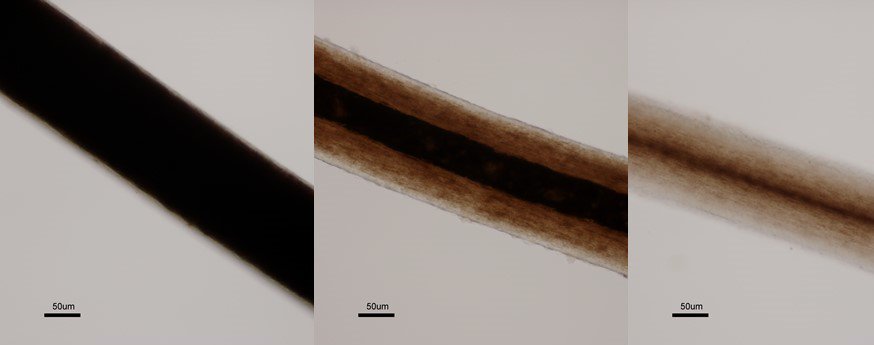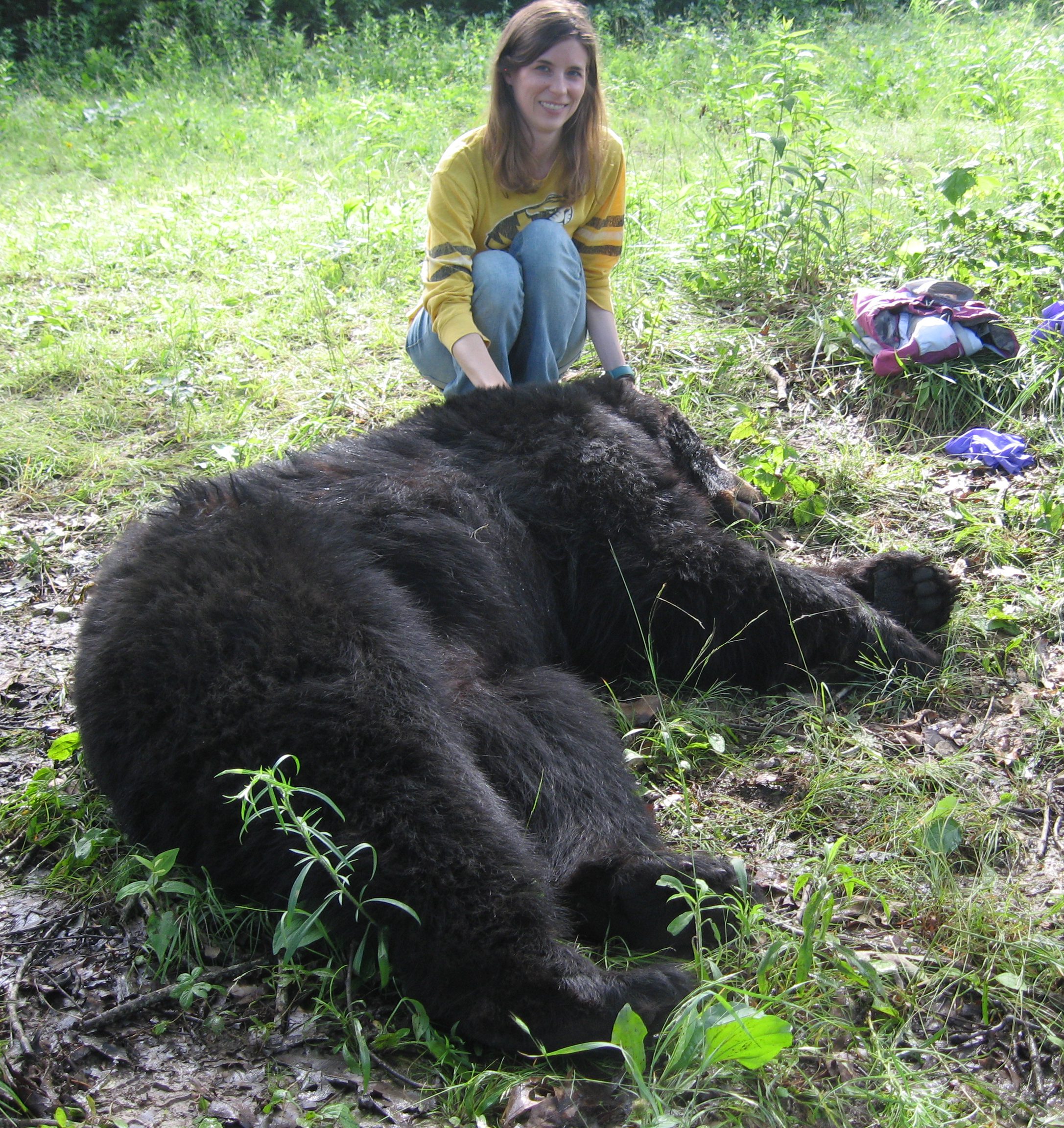Color Variation in Bears

As their name suggests most American black bears are black in color; however, there are a variety of different brown shades (cinnamon, chocolate, and liver), as well as the iconic white/Spirit and grey/Glacier bears along the Pacific coast. These color morphs have unique spatial distributions, which may be associated with adaptation across the landscape. We are investigating both the genetic basis for unique color morphs and the evolutionary history of those variants over space and through time.
American Black Bear Density and Dispersal

My work with the Missouri Bear Project has explicit implications for wildlife management. We conducted a genetic mark-recapture study of black bears in Missouri and estimated a population of 280 bears in the state. This project also describes how study design factors of genetic mark-recapture using hair snags influences population size estimates.
I am also working on a project that explores the interplay between bear density, amount of genetic diversity, and female philopatry on sex-biased dispersal.
Landscape Genetics for Conservation
Evolution of Hyper-Carnivory
The bear family has large variation in dietary diversity, encompassing the hyper-herbivorous giant panda, hyper-carnivorous polar bear, but most are omnivorous. We are investigating the evolution of carnivory from the perspective convergence evolution.